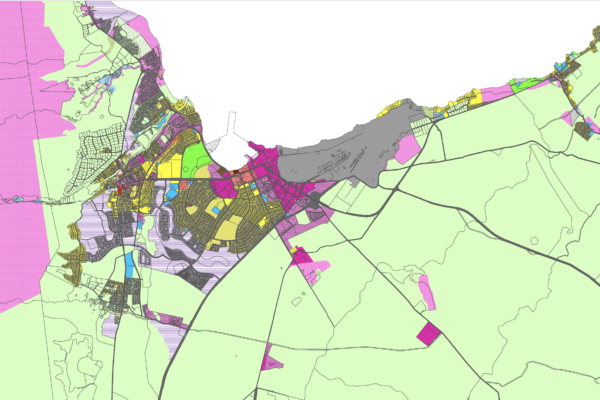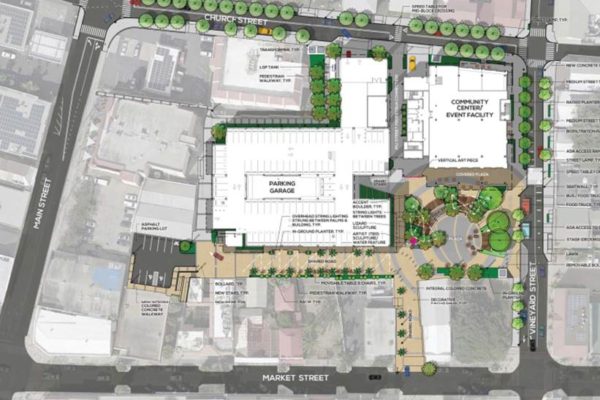June 30, 2010
Mahalo for this opportunity to offer comments on the Draft EIS for this project on behalf of the six hundred members of Sierra Club Maui Group. Sierra Club has offered input to this project since its expansion to 670 acres in the late 1980’s. We have long felt that the sensitive characteristics of this site and the amount of modification proposed for golf course and housing warranted an updated EIS process. We appreciate the applicant’s response to our request to extend the deadline for comments.
We are disappointed that the so-called EA issued in conjunction with this project, contained so little specific information about what was planned. This lack of two levels of review for a complex project, compressed the public’s opportunity to provide meaningful comments into a very short time frame. While this DEIS is lengthy, it has many sections which appear to be cut and paste from previous sections, with no additional information being offered.
We also believe that this document does not meet the requirements set forth in
HAR 11-200-17(E) which requires proposed actions to provide the information necessary to permit an evaluation of potential environmental impacts in their EIS.
Segmentation of Associated Actions
There are a number of actions associated with this project which are necessary precedents for the larger project and, to be in compliance with HAR 11-200-7 (B), these must be included in the DEIS to avoid segmentation of environmental review. A famous case here on Maui involving Kahana Sunset condominiums established this as an important legal precedent.
The Supreme Court opinion stated: "the Commission is the agency receiving the request for approval of the action, and it is therefore the agency responsible for preparation of the environmental assessment." In so holding, we recognized that "[i]solating only that particular component of the development for environmental assessment would be improper segmentation of the project."
This appears to be what is happening with a number of actions connected to the Honua’ula project. Widening of Piilani Hwy from Kilohana to Wailea Ike St. is a required condition of rezoning, as are improvements to Wailea Ike and other intersections. Environmental review for these actions has been done separately and is not included in any meaningful way in the project’s DEIS.
Off-Site Affordable Housing
Likewise there is no discussion, evaluation or mitigation of the impacts of the proposed 250 affordable units in North Kihei (except a plan to reduce traffic impacts required by conditions of rezoning). These are part of the Honua’ula project, although they are located elsewhere.
Major offsite Infrastructure
Offsite wells, transmission lines and storage tanks for potable and non-potable water supplies and wastewater transmission lines are located on private land and will have no environmental review if they are not evaluated in the DEIS. Only the wastewater line has any discussion of botanical review, but no report or survey maps are included.
MECO Power Station Expansion
Basic information about the proposed MECO expansion should be included in the DEIS, since the expansion area adjoins a reservoir area to store brackish water for Wailea resort.
Do transformers contain toxic substances? Is there a minimum distance recommended between electrical equipment and homes, shops or public spaces? The DEIS should present as much information as available, whether MECO decides to expand or not.
While it is mentioned that the present overhead high voltage power lines that transect the property will be relocated underground, it is not mentioned if lines from the proposed Auwahi wind farm would likely be located above ground or below ground? Will specific archaeological review be done along the corridor where the high voltage lines are buried?
When will information be obtained from MECO to meet condition 18 of rezoning, since this information is part of Project District Phase II approval?
Wastewater Treatment Facility
The DEIS does not appear to have the Sewage Disposal Analysis reviewed and commented upon by state and county agencies, as required by condition of rezoning No. 16 prior to Phase II approval. Instead, it states that;
“For a more detailed analysis Honua‘ula Partners, LLC has engaged Brown and Caldwell Engineers to prepare a Draft Honua‘ula Sewage Disposal Analysis. In accordance with this condition, the Analysis will be submitted to the State DOH and DLNR and the County DEM and DWS for review and comment before Project District Phase II approval. The Analysis, along with reviews and comments, will then be submitted to the Maui County Council for review. “
Since the Planning Commission is responsible for granting the project’s Phase II approval, and the Analysis must be submitted to various agencies for review before Phase II approval, this DEIS should already include the Sewage Disposal Analysis and related comments to provide adequate opportunity for meaningful review and comments by the public and the Planning Commission,
Especially important would be a discussion of comparative wastewater fees for residents. Since affordable homes are guaranteed parity with public facility rates, would Makena Resort’s wastewater system be able to operate with half the customer base at lower fees? Policymakers should have access to this information as early in the process as possible.
Based upon the large volume of critically needed information lacking either any inclusion or review in this DEIS document, Sierra Club would request the accepting authorities to find the document incomplete and premature and request that the DEIS be resubmitted when the missing information can be included. To not take this action is to segment the project, in direct violation of HRS 343 and its applicable rules.
3.6 Biological Resources
The proposed 22 biological preservation area is wholly inadequate, and ultimately neither sound conservation planning nor wise resource utilization. The 143 acres of fragmented preservation areas proposed around the golf course holes in the southern portion of the site does not offer the best strategy for successful management.
Dr. Jonathan Price, an expert in Hawaiian dryland forest preservation commented on the Honua’ula plan:
“the smaller the area preserved, the more intensive the management will need to be. A site of a few acres for example, particularly if divided into scattered smaller units, will require costly, intensive management, in order to maintain even a modicum of ecosystem integrity. On the other hand, setting aside an area of more than 100 acres would require some degree of management, albeit far less intensive than the former scenario.”
The DEIS should analyze a Project Design layout in the Alternatives Section that includes a 130 acre botanical cultural preserve, to be in compliance with condition no 27 of rezoning.
4.1 Cultural Resources
The project’s AIS is based upon methodologies that involve minimal testing (only six of 40 sites, most with one 1ft by 1 ft test unit), inadequate mapping and incomplete fieldwork.
The AIS does not specify how many field sessions involving how many personnel, for how many days have taken place at the project site, nor does it elaborate on the transect areas covered. These are all standard disclosures in archaeological reviews. It is still unclear if actual transects have been completed of the northern 480 acres.
It is clear that when citizens reported during public testimony that numerous additional cultural sites were on the land, they were correct. Twelve new sites with nearly twenty features have been recorded since the last draft AIS in 2001. Citizens continue to submit pictures and locations of additional sites. It is clear that the AIS is far from being complete.
Site evaluation at Honua’ula project does not appear to actually be based upon the State Historic Preservation law process. Especially lacking is a clear assignment of significance Criterion E as specified by 13-284-6(b) 1-5 HAR, which this AIS and DEIS must comply with.
Criterion E is defined in the AIS as: “ applies to sites or places perceived by the contemporary community as having traditional cultural value.”
The AIS version of criteria E omits the following underscored language;
(5). Criterion ‘e’ Have an important value to the Native Hawaiian people, or to another ethnic group of the state due to associations with cultural practices once carried out, or still carried out, at the property or due to associations with traditional beliefs, events or oral accounts – these associations being important to the groups history and cultural identity.
Only the three recorded stepping stone trail sites have been evaluated as significant under criteria E”. One segment of stepping stone trail recorded earlier, placed on a crude map and not assigned a number has seemed to disappear from the inventory survey. It is not explained whether this segment was not relocated, combined with another segment and assigned the same site number or has simply been forgotten. Cultural practitioners have shown photos of several additional unrecorded segments of stepping stone trails on the project site. Some of these trails appear to lead to planting areas. Some make connect with trail segments found on the Wailea golf course or in Palauea preserve further west. No accurate maps have been provided showing relationship of the trail sections. It is unclear whether all are being preserved in their original cultural setting.
4.8.1 Water
Preliminary Engineering Report relies on declaratory statements about the adequacy of the project’s water systems without supporting technical studies to substantiate its claims. There is not enough quantitative data on water systems to permit any impact analysis. There are no independent hydrology reports. The USGS study referred to that purportedly supports higher available flows for Kamaole aquifer, only mentioned the aquifer as one entry in an aquifer chart. The USGS report offered no analysis of the aquifer’s potential SY. The 1988 hydrology report for the project cautioned that Wailea 670’s wells could impact downslope wells in Wailea and comments from Wailea Resort management made the same statement. The DEIS must analyze the proposed use of the Kamaole aquifer for the project’s demand by researching and evaluating the entire range of existing users and the relative pumpage and salinity of their wells. Water fees for residents must also be discussed to comply with rezoning conditions.
4.8.3 Drainage
Drainage plans appear to be elaborate, but there is little quantative data to provide assurance that the assumptions they are based upon will prove to be sufficient to mitigate impacts. For example, one of the larger areas of drainage flow impact, basins 1 through 5 at the north of the project site have a high concentration of high-density urban environment proposed, the lowest percentage of golf course lands to absorb run off, and drainage basin systems not scheduled to be completed until Phase II (2018) or Phase III (2022) of the project. The existing offsite drainage impacts to this area during a 100 yr / 24 storm are huge: over 2,100 cfs (1300 mgd). Currently two 10ft or more diameter culverts are installed to carry water from this sector of the project area under Piilani highway and eventually to the ocean. Options, such as a larger natural buffer area between, Maui Meadows and Honua’ula should be discussed as viable alternatives to mitigate overflows in this high impact area. Currently, less than 4 acres is proposed for this buffer.
To give a blanket statement, that the project’s theoretical system of drainage basins, and absorption by golf courses and open space will mitigate large storm event flows, seems highly speculative. No examples of similar successful designs were included in the DEIS discussion for comparison. Tit also seems risky to assume that pre-existing and off site flows will not need additional containment measures in order not to overwhelm facilities designed for only post development flows. If coastal impacts result from the project, what mitigations will be available to restore the health of public trust resources?
There is no plan for all-important maintenance of the retention basins in the “Master Drainage Plan.”
4.10.5 Parks
One of the project’s 3 private neighborhood parks is located along the makai boundary of the property in a natural gulch area currently subject to high velocity flows during storm events. A park location on either side of the natural gulch would be more practical.
Sierra Club Maui requests that the accepting authorities find this DEIS incomplete and premature. Without including the omitted studies and evaluation information in the DEIS, the project is not in compliance with the environmental review laws of the State of Hawaii. We appreciate this opportunity to share our remarks.
Sierra Club Maui Group,
Lucienne de Naie
Conservation Committee



